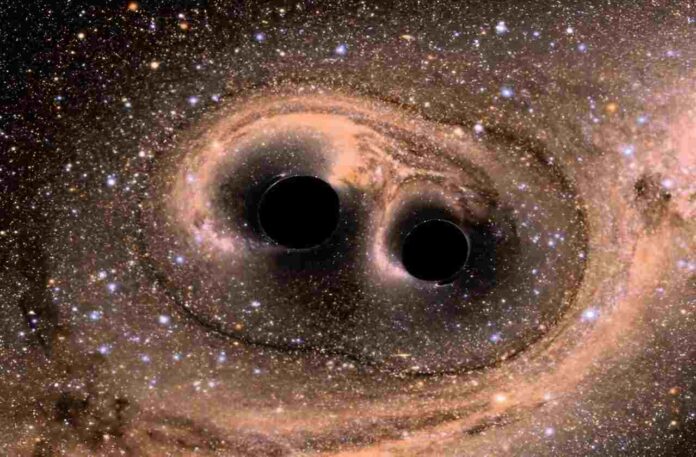Black holes are so massive that when they crash into each other, they create ripples in the fabric of space and time. These ripples are called gravitational waves, and they were first predicted by Albert Einstein in 1916. However, it took almost a century for scientists to detect them directly using LIGO (the Laser Interferometer Gravitational-Wave Observatory) in 2015.
Scientists are now trying to learn more about these gravitational waves and what they reveal about black holes. They use complex computer simulations to model the different stages of black hole collisions: the spiral, the merger, the ringdown, and the final black hole. These simulations require supercomputers to run because of the complicated physics involved.
The scientists then compare the results of these simulations with theoretical models of how gravitational waves behave. The older models assumed that the gravitational waves did not affect each other. But this did not seem realistic. Imagine two people making waves in a pool. If the waves are small, they may not interact much. But if the waves are big, they will collide and create new waves. Similarly, scientists expected that the strong gravitational waves from black hole collisions would interact with each other, but this was not visible in the models.
A group of researchers from Caltech, Columbia University, the University of Mississippi, Cornell University, and the Max Planck Institute for Gravitational Physics performed a new and more detailed analysis of the simulation data. They found evidence of gravitational wave interactions, as they had predicted. Each wave slightly alters the others, creating new kinds of waves with different frequencies. These new waves are smaller, more irregular, and less predictable than the original ones. By adding this feature to the models, the scientists can better explain what the simulation data shows.
Improving the models of black hole collisions will make them more accurate and useful for interpreting real-world observations. The more precise the models are, the more information they can provide from the data collected by LIGO.
Moreover, better models can help scientists test if general relativity is the correct theory to describe what happens inside black holes. General relativity is Einstein’s famous theory that explains how gravity shapes space and time. But it is not clear how well this theory applies to the weird properties of black holes.
Black hole collisions are far away from Earth and our daily lives. We cannot feel gravitational waves ourselves, but they are expanding our knowledge of these amazing phenomena every day.
